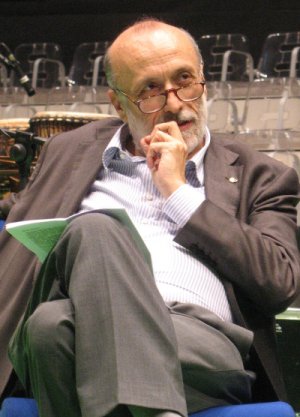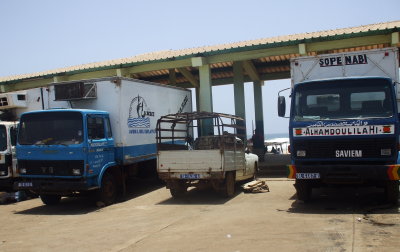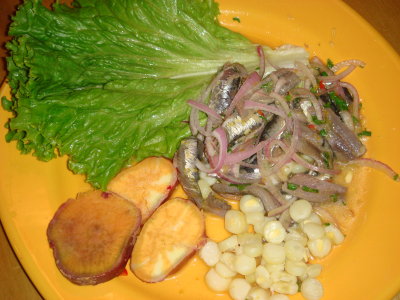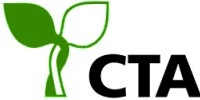 Mundus maris is participating in the Terra Madre networking event in Turin, Italy, 21 to 25 October 2010. Terra Madre is organised by the Slow Food Movement that was started in Italy in 1989 upon the initiative of Carlo Petrini. Delegates from 15 countries signed the founding manifesto.
Mundus maris is participating in the Terra Madre networking event in Turin, Italy, 21 to 25 October 2010. Terra Madre is organised by the Slow Food Movement that was started in Italy in 1989 upon the initiative of Carlo Petrini. Delegates from 15 countries signed the founding manifesto.
Slow Food is a non-profit, eco-gastronomic member-supported organization that was founded in 1989 to counteract fast food and fast life, the disappearance of local food traditions and people’s dwindling interest in the food they eat, where it comes from, how it tastes and how our food choices affect the rest of the world. To do that, Slow Food brings together pleasure and responsibility, and makes them inseparable. Slow Food has currently over 100,000 members in 132 countries.
Fish and seafood is part of the diet of people around the globe. The Food and Agriculture Organization of the United Nations (FAO) estimates that humans consumed on average 16.7 kg of fish and fisheries products in 2006. 47% of this was believed to be due to aquaculture.
18.5% of total animal protein intake in low-income food deficit countries (LIFDCs) is ensured by fish and fisheries products – probably an under-estimation because artisanal and subsistence fisheries are very poorly covered in national statistical systems and thus also by FAO.
 Production of fish and seafood is one of the most globalised food sectors in the world. FAO estimates that close to 40% of global production enters international trade. Even many small-scale fisheries are fully integrated into this global market, though their contribution is chronically underestimated. Europe is the biggest importer of fisheries products in the world, before the other two major import markets: North America and Japan. China is reported to be the biggest producer in the world, but has also a huge domestic demand because fish has been a standard part of Chinese cuisine for millennia.
Production of fish and seafood is one of the most globalised food sectors in the world. FAO estimates that close to 40% of global production enters international trade. Even many small-scale fisheries are fully integrated into this global market, though their contribution is chronically underestimated. Europe is the biggest importer of fisheries products in the world, before the other two major import markets: North America and Japan. China is reported to be the biggest producer in the world, but has also a huge domestic demand because fish has been a standard part of Chinese cuisine for millennia.
Other populous Asian countries are also big players in the global market of fishery products. At the same time, poor segments of the population, particularly in developing countries are the first to be vulnerable to scarcity and higher prices engendered by a mix of overfishing, environmental degradation, lack of purchasing power and other factors.
Promoting and eating sustainably produced fish and seafood, preferably from local or nearby sources rather than products that have travelled half-way around the world is a concern Mundus maris shares with the Slow Food movement. That can have many positive side effects in addition. Avoiding to eat baby-fish is one concrete way. Promoting fish for human consumption instead of reduction to fishmeal and oil, such as historically happened to the famous Peruvian anchoveta, is another.
The good example is cod. For a long time, it was mostly reduced into fish sticks. In the past, the fishermen pulled up specimens from the North Sea and the Baltic weighing in at an impressive 100 kg. Today, the animals are much smaller. They end up in refrigerated shelves before they even had the chance to reproduce. The young generation is not coming through. 150,000 tons of adult cod would need to be swimming in the North Sea to maintain the stock. Currently, there are less than 70,000 tonnes. The cod eats sprat, herring and crabs. Once they are gone that tilts the ecosystem. Jellyfish are multiplying, even bacteria. Life in the oceans is changing - and the fishermen expand their radius of action into distant fishing grounds.
 Large fishing fleets from the EU and other countries going after the resources outcompete the West African fishermen. In Senegal, the Thiof - Epinephelus aenaeus, the White grouper – used to be a national dish. It has now largely disappeared from the diet, as well as some other valuable bottom fish. Even the octopuses that had benefited from the thinning – they are eaten by the fish - are becoming rare. The trawlers are insatiable.
Large fishing fleets from the EU and other countries going after the resources outcompete the West African fishermen. In Senegal, the Thiof - Epinephelus aenaeus, the White grouper – used to be a national dish. It has now largely disappeared from the diet, as well as some other valuable bottom fish. Even the octopuses that had benefited from the thinning – they are eaten by the fish - are becoming rare. The trawlers are insatiable.
In the North Sea, they pull up flatfish from the water, of which more than 90% are smaller than the minimum size required by the EU. They are caught too young – accounting for up to 80 percent of all fish that ends up in German shops. Worldwide, up to 70 percent of all exploited fish species are threatened.
The Pacific coast of South America, the cold Humboldt Current – once it was especially rich in fish: groupers and horse mackerel, hake and bonito were swimming about in great abundance. Guano birds multiplied accordingly and allowed a lucrative saltpeter - fertilizer industry. All thanks to the rich schools of anchoveta. Today it is different. The sea is, however, not yet empty. Anchovies, or anchoveta as they are known locally, are still about, though now in smaller shoals. But: As long as there was hake in abundance, why eat the anchovies. In the interior of Peru, they were similarly unpopular as jellyfish in Germany, for example. They did not have their place on the menu, at least not in recent decades. Yet, they were heavily fished - for the anchoveta to be processed into fishmeal. And nowhere else in the world as much of this protein product gets manufactured as in Peru.
Business is still good. Salmon and other predatory fish are thus fed in the global aquafarms. The rule of thumb is: it takes up to 5 kilos of feed fish for one kilogram of farmed fish. This way, aquafarms of organism requiring animal protein paradoxically aggravate the problem of overfishing. And politics imposes few or no boundaries on the hyper-modern fishers.
 Those who would like to continue enjoying fish on their plates need to protect the sea creatures themselves, for example at the fish counter. If the North Sea cod is smaller than 68 centimeters, choose a different fish. This is more common than we suspect: In a test, three quarters of the fish, the Hamburg consumer protection agency bought in delicatessen shops, department stores and supermarkets, were too small.
Those who would like to continue enjoying fish on their plates need to protect the sea creatures themselves, for example at the fish counter. If the North Sea cod is smaller than 68 centimeters, choose a different fish. This is more common than we suspect: In a test, three quarters of the fish, the Hamburg consumer protection agency bought in delicatessen shops, department stores and supermarkets, were too small.
Together with fisheries biologists the agency developed a Shopping Guide - the Fisch-O-Meter, a washable special ruler for each shopping bag. Indicated thereon are: The minimum size for cod, but also for plaice or sprat. With an Internet-enabled mobile phone or an I-phone you can access the information anywhere - www.Fischimhandy.de or the I-Phone. Those who want to create their own fish ruler can do so on the website of INCOFISH Project. The research examined how - often conflicting - demands on coastal resources can be reconciled. The ruler helps, the idea is already exported.
Pacific coast, the small fishermen in Peru are annoyed. So far, they have had to put up with the occasional El Niño (the Christ child). El Niño - the name comes from the Peruvian fishermen - occurs as a natural phenomenon, often around Christmas time. Because it weakens the Humboldt Current, nearly all fish stay away. But now, there is also the overfishing. The Peruvian fisheries experts are not pleased either.
So they have, in cooperation with scientists from Europe also developed a fish ruler – Chikipez - "the little fish," adapted to the specific conditions in different regions of Peru. It is e.g. about the Pejerrey (a type of smelt), the Lisa (Mullet), the Cabrilla (the Peruvian sea bass) or bonito (a small species of tuna).
 The power of the consumers is actually limited. And for the Peruvians fish supply is particularly important as it covers a significant part of their animal protein needs (21.4 kg / year per capita). The government has been trying for some time to promote the consumption of the Anchoveta. Several newspapers have launched a campaign. Prominent Peruvian chefs have developed 60 Anchoveta recipes, the energy company Edelnor has supported them. With success.
The power of the consumers is actually limited. And for the Peruvians fish supply is particularly important as it covers a significant part of their animal protein needs (21.4 kg / year per capita). The government has been trying for some time to promote the consumption of the Anchoveta. Several newspapers have launched a campaign. Prominent Peruvian chefs have developed 60 Anchoveta recipes, the energy company Edelnor has supported them. With success.
In 2000, just 30,000 cases with 20 Anchoveta-cans each have been sold, in 2008 it were already 1.6 million cases. Now Peruvians eat Anchoveta raw - as ceviche. For ceviche, raw fish is cured with lime juice. It is then served with onions, chili, sweet potatoes and other side dishes.
For the first time since the pre-Columbian high cultures, the anchoveta has re-entered and enriched Peruvian menus. Peruvians eat Anchoveta also as a kind of pickled herring. The imagination knows no boundaries.
 Three Mundus maris partners from Africa will participate in the Madre Terra event in Turin. Their participation has been kindly sponsored by CTA - the Technical Centre for Agricultural and Rural Cooperation ACP-EU. Read on to make their acquaintance and read their story.
Three Mundus maris partners from Africa will participate in the Madre Terra event in Turin. Their participation has been kindly sponsored by CTA - the Technical Centre for Agricultural and Rural Cooperation ACP-EU. Read on to make their acquaintance and read their story.








